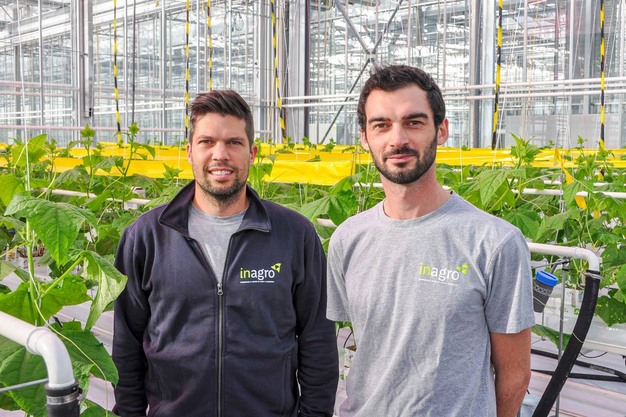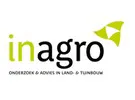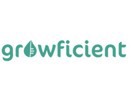The more you know about growing fruits and vegetables, the better will be your results. To help growers optimize their cultivation, the Belgian company Inagro conducts research into all the factors that can influence a cultivation. Growficient's sensors help them collect valuable data. Inagro researchers Bert Deruyck and Simon Craeye talk about this collaboration.
Inagro does research on innovations in agriculture and horticulture. One of their focus areas is greenhouse cultivation. Here, Bert and Simon research alternatives for the substrates stone wool and perlite, among other things. They are also working on finding out what exactly happens to peat when you reuse it. How will the chemical composition change after recycling it 1, 2 or 3 times? At Inagro they saw, for example, a consistent decrease of good fibers and in general wetter substrate the more the peat was recycled.
Growficient and Inagro work together in the Living Lab Agrotopia, among other things. Agrotopia is a greenhouse built on the roof of a packaging shed in Roeselare, West Flanders. Inagro's goal is to help growers optimize their cultivation. Simon explains, "When growing in greenhouses, many factors play a role. Not only the water management of plants, but also the nutrients present, the climate in the greenhouse, radiation from the weather outside and, of course, the type of substrate. Most growers have a good idea of what works and what does not. They will generally rely on their feelings and experience. With data, we want to make this feeling objective so that we can better respond to similar situations in the future."

Practical sensors
That's where Growficient's sensors come in. Bert: "We use sensors to measure what is happening in the substrate. A big advantage of Growficient's sensors is that they not only give insight in the water balance, but also measure the EC-value. That way we also have insight in what is happening with the nutrients in the substrate. And that every five minutes. You can't beat that with the occasional water sample."
Several types of sensors are available on the market. Why did Inagro choose Growficient? Simon: "At Inagro we do research on different types of substrates, from stone wool and peat to experimental organic mixtures. Most sensors only give reliable results in one type of substrate. Growficient's sensors, on the other hand, have good readings in all different types of substrates. That makes them more applicable for us. Moreover, they are small, wireless and robust, so you can also easily place them in another mat when you want to measure there."
Making cultivation more sustainable
One of the things Inagro hopes to achieve with their research is to make cultivation more sustainable. Simon: "Stone wool and perlite are familiar substrates to many growers. Therefore, when growing a new crop, they are quick to choose those substrates. More and more organic alternatives such as coir and wood fibers, bark or residual flow waste from other production processes are finding their place in the market and are generating interest among growers. We want to help growers to optimize the irrigation for every type of substrate, and in doing so, sensors are proving to be a useful tool."
In doing so, data is indispensable. Simon continues: "Each type of substrate has different properties and requires a different cultivation strategy. With sensors you no longer need to guess what the right watering is, since you will get it directly from the data. This knowledge is indispensable when growing on a new substrate. This way you can simultaneously make your cultivation more sustainable and still achieve optimal results. During our grower meetings, we notice that the growers are increasingly more open to this."
More data, more time for cultivation
With their research, Inagro wants to help growers to improve their results in practical application. Bert: "Some growers fear that additional sensors will only cause them to spend more time behind the computer. Our goal is to provide a clear overview, in one glance, of what is happening in the greenhouse. By visualizing data or giving push messages when a certain observation is made, you can make good decisions faster. With the right tools, such as the Growficient dashboard, data actually saves you time."
Both researchers want to emphasize that digitization is not an end, but a means. Simon: "A greenhouse does not have to be completely full of sensors to get good data. We think it is important that every measurement has a purpose. That way you can keep it organized, while still getting valuable information about your crop. As long as your data can tell you whether you're on the right track for optimal cultivation, that's all you need to know."
For more information:
Inagro
www.inagro.be
info@inagro.be

Growficient
info@growficient.com
www.growficient.com
